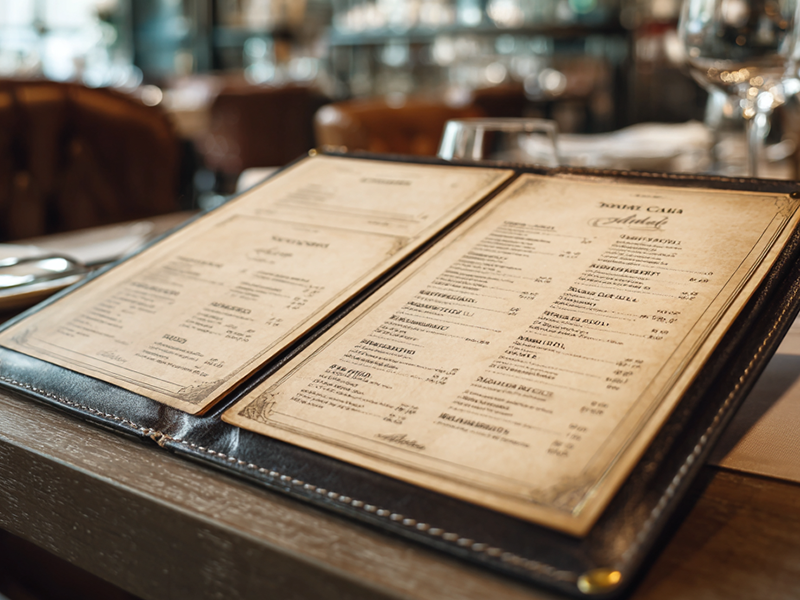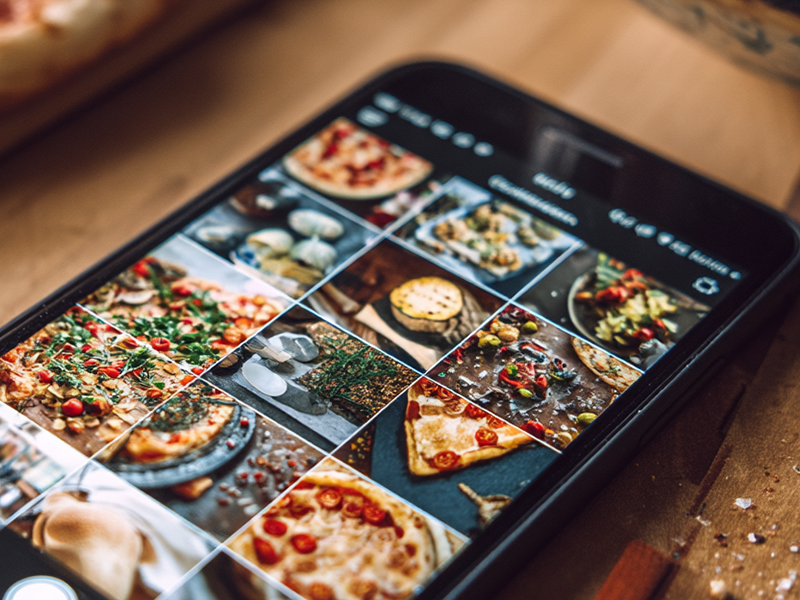By Katrin Krakovich, CEO of Lahav Media
Your restaurant website should be working harder than your busiest server on a Saturday night. Instead, it's probably sitting there like a broken espresso machine, frustrating potential customers and sending them straight to your competitors.
After spending years helping restaurants, cafes, and coffee shops transform their online presence, I've seen it all. Beautiful websites that take forever to load. Menus you need a magnifying glass to read on mobile. Contact pages that make finding your restaurant feel like solving a mystery novel.
Here's the hard truth: restaurant website design isn't just about looking pretty. It's about converting hungry visitors into paying customers, dominating Google search results, and building a brand that stands out in an increasingly crowded market.
The Fatal Mistakes That Kill Restaurant Websites
Mobile Menus That Require a PhD to Navigate
Last month, I tried ordering from a local coffee shop whose menu was a PDF scan from 2019. On my phone, I had to pinch and zoom like I was examining evidence at a crime scene. Three frustrated taps later, I was ordering from their competitor instead.
Your menu needs to be mobile-first, period. Over 70% of restaurant website visitors are on mobile devices, and Google's mobile-first indexing means your mobile experience directly impacts your search rankings.

Loading Times Slower Than Your Slowest Cook
If your website takes more than 3 seconds to load, you're hemorrhaging customers. Google data shows that 53% of mobile users abandon sites that take longer than 3 seconds to load. For restaurants, that's the difference between a full house and empty tables.
I've audited restaurant websites that took 12 seconds to load because they were stuffed with unoptimized images of every menu item. Your food photos matter, but not if nobody waits around to see them.
Essential Restaurant Website Design Elements That Actually Convert
Online Ordering Integration That Doesn't Suck
Your online ordering system should feel seamless, not like navigating a government website from 2005. The best restaurant websites integrate ordering directly into their design, making it feel like a natural part of the browsing experience.
Third-party platforms like DoorDash have their place, but driving traffic to your own website for direct orders saves you those hefty commission fees. Plus, you own the customer relationship and data.
Google Business Profile Integration
Smart restaurant website design pulls your Google Business Profile reviews, photos, and hours directly into your site. This serves two purposes: it keeps your information consistent across platforms (crucial for local SEO), and it shows social proof right where potential customers are making decisions.
Location and Hours Visibility
I can't count how many restaurant websites hide their location like it's classified information. Your address, phone number, and hours should be visible on every page, preferably in the header or footer. This isn't just user experience, it's local SEO gold.
The Homepage That Hooks Customers in 5 Seconds
Your homepage has one job: answer the three questions every visitor has within seconds of landing on your site.
What type of food do you serve? Don't make people hunt for this. Your hero section should immediately communicate whether you're a farm-to-table bistro, a casual burger joint, or a specialty coffee roastery.
Where are you located and when are you open? This information should be impossible to miss. I've seen too many beautiful restaurant websites that forget to mention they're only open for breakfast and lunch.
Why should I choose you over the competition? This is where your unique value proposition comes in. Maybe you're the only Mediterranean restaurant in town, or you roast your own coffee beans, or you have the best patio for weekend brunch.
Menu Design That Sells
The Psychology of Menu Layout
Restaurant menu design on websites follows different rules than print menus. Online, you're competing with infinite distractions. Your menu needs to be scannable, mobile-friendly, and designed to guide customers toward high-margin items.
Use descriptive, appetizing language without going overboard. "Grass-fed beef burger with house-made aioli" sells better than "Hamburger," but "Artisanally-crafted bovine protein experience with molecularly-enhanced condiment emulsion" just sounds pretentious.
Pricing Strategy That Doesn't Scare Away Customers
Include prices. I know it's tempting to hide them and hope customers fall in love before they see the numbers, but transparency builds trust. Plus, you're qualifying leads, not wasting time with price-sensitive customers who wouldn't order anyway.

Local SEO Through Strategic Website Design
Schema Markup for Restaurants
Most restaurant websites are invisible to Google's understanding of what they actually offer. Implementing restaurant schema markup tells search engines exactly what you are, where you're located, what your hours are, and what type of cuisine you serve.
This structured data helps you appear in local search results, Google Maps, and those coveted AI-powered search answers from ChatGPT and Google Gemini.
Landing Pages for Each Service
If you offer catering, private dining, or special events, each service needs its own dedicated landing page. This isn't just good user experience, it's how you capture long-tail search traffic.
A coffee shop might have separate pages for "corporate catering," "wedding coffee bar service," and "private coffee cupping events." Each page targets specific customer intents and search queries.
Social Proof That Actually Works
Review Integration Strategy
Don't just dump all your Google reviews on a testimonials page that nobody visits. Integrate specific reviews throughout your site. Put your best delivery reviews on your online ordering page. Feature your atmosphere reviews on your private events page.
Instagram Feed Integration
Your Instagram feed should live on your website, especially if you're a cafe or trendy restaurant with strong visual content. This keeps your website fresh with new content and shows potential customers what the actual experience looks like.

The Technical Foundation That Supports Growth
Page Speed Optimization
Fast websites rank better and convert better. Compress your food photos, use modern image formats like WebP, and implement lazy loading. Your mouth-watering hero image shouldn't take 8 seconds to appear.
SSL Certificates and Security
Google prioritizes secure websites, and customers need to trust your site with their contact information and potentially payment details. An SSL certificate is non-negotiable in 2024.
Analytics and Conversion Tracking
You can't improve what you don't measure. Set up Google Analytics 4 with specific goals for menu views, online orders, reservation requests, and contact form submissions. This data tells you what's working and where you're losing potential customers.
FAQ: Restaurant Website Design Questions

-p-500.jpg)
